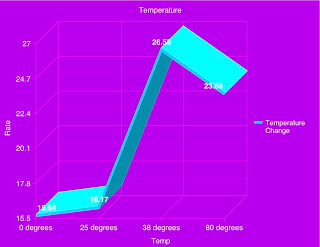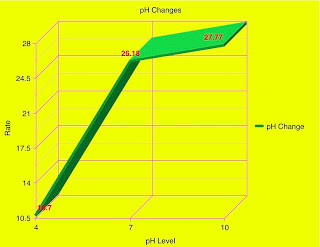There are a number of people who have made the thought of evolution what it is today in the world of science. It was not just Charles Darwin theories like may people think. Jean Baptistie Lamarack and Karl Popper are a few of the others that added to the way of thinking about evolution.
Charles Darwin's theory of evolution is that all life is related and has descended from a common ancestor, everything is related in someway. Darwin's theory is that the development of life is a naturalistic descent. He believed that complex creatures evolved from their simplistic ancestors naturally over time. The organism went through genetic mutations, this made the organism able to keep all the beneficial mutations because they lived through the ancestors. This process is known as Natural Selection. These beneficial mutations are passed on to the next generation and so on. Darwin believed that over time all the beneficial mutations accumulated made the result an entirely different organism. Darwin said "natural selection acts only by taking advantage of slight successive variations; she can never take a great and sudden leap, but must advance by short and sure, though slow steps."
The reason why there is a huge controversy about Charles Darwin and his theory is because Darwin popularized the theory of humans evolving from apes. Many churches were upset about this because that is not what they have ever taught. They say God made everything and everyone, and that humans are nothing like apes. Even though many people do not believe in Charles Darwin his ideas and theories are still every well known and used today in science.
Of course Darwin was not the first naturalist to come up with the idea that species change over time into new species. Jean Baptiste Lamarck is another important figure in theory of evolution. Lamarck started his scientific career as a botanist, but in 1793 he became on of the founding professors of the Musee National d'Histoire Naturelle as a expert on invertebrates. His work on classifying worms, spiders, mollusce, and other boneless creatures was far ahead of his time. While doing his work Lamarck was struck by the similarities of many of the animals he studied, and was impressed to by the burgeoning fossil record. This led to him arguing that life was not fixed, he believed that when the environment changed the organisms had to change their behavior to survive. One of his examples was if a giraffe stretched its neck for leaves a "nervous fluid" would flow into its neck and make it longer. The off springs of that giraffe would inherit the longer neck, and that the continued stretching would make the neck longer still over several generations. While that was going on the organs that the organisms stopped using would shrink.
This sort of evolution, for which Lamarck is most famous today, was only one of two mechanisms he proposed. As organisms adapted to their surroundings, nature also drove them inexorably upward from simple forms to increasingly complex ones. Lamarck also proposed that organisms were driven from simple to increasingly more complex forms.
In many ways Darwin's argument is very different from Lamarck's.
Karl Popper, one of the most popular philosophers of science. He is well known for his extreme logic and be very beneficial to theories of evolution. He coined the term Critical Rationalism to describe his philosophy. The term indicates his rejection of classical empiricism, and of the classical obsercationalist-inductivist account of science that had grown out of it. Popper accepted psuedo-science, but did not believe they were any part of general science. Popper also didn't think that Darwinism was a testable theory.
Popper separated evolution from science and assigned it to the realm of metaphysics. According to Popper's principle of demarcation, only those theories which are open to empirical falsification are scientific. That is, unless there is a way to prove a theory wrong there is no way to prove it is right.
These scientists do not just contribute ideas and new ways of thinking with evolution theories, but were also the face of every ones research and work on evolution.
Throughout out all the research every scientist has done there are key words and main thing that are agreed on with all. Macroevolution and microevolution are two that every important to evolution. You might be wondering what they are and what they mean. Well, macroevolution is used to refer to changes in organisms which are significant enough that, over time, the newer organisms would be considered an entirely new species. Basically it means that the new organisms would be unable to mate with their ancestors, assuming they were brought together. Microevolution is a change in gene frequency within a population over time. This change is caused by four different processes: mutation, selection, gene flow and genetic drifts. The difference is largely one of approach. Microevolution is reductionist, but macroevolution is holistic. Each approach offers different insights into the evolution process. Macroevolution can be seen as the sum of long periods of microevolution, and thus the two are qualitatively identical while being quantitatively different.
Simply put, evolution is the result of changes in genetic code. The genes encode the basic characteristics a life form will have, and there is no known mechanism that would prevent small changes (microevolution) from ultimately resulting in macroevolution. While genes can vary significantly between different life forms, the basic mechanisms of operation and change in all genes are the same.
Work Cited
Allaboutscience. "Darwin's Theory Of Evolution - A Theory in Crisis." Darwin's Theory Of Evolution. Web. 18 May 2011.





